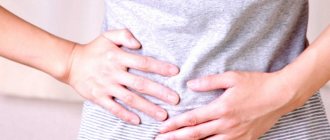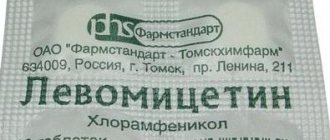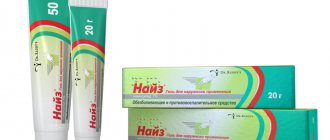Ishchenko Irina Georgievna
Obstetrician-gynecologist, ultrasound diagnostics doctor, candidate of medical sciences, specialist in the field of aesthetic gynecology
Bulatova Lyubov Nikolaevna
Obstetrician-gynecologist, highest category, endocrinologist, ultrasound diagnostics doctor, specialist in the field of aesthetic gynecology
Vybornova Irina Anatolyevna
Obstetrician-gynecologist, endocrinologist, candidate of medical sciences
Lavrova Oksana Vitalievna
Obstetrician-gynecologist, endocrinologist
According to gynecological specialists at our medical center, one of the most common complaints they are approached with is painful periods. In scientific terminology, they are usually referred to by the term “dysmenorrhea”, which is literally translated from Greek as “difficult menstrual flow” and in the modern understanding is a set of various painful symptoms experienced by a woman during menstruation. In domestic medical practice, there is also the concept of “algomenorrhea,” which characterizes menstrual pain that is not associated with other gynecological diseases. However, this term has recently been used less and less.
The course of dysmenorrhea can vary somewhat, but in most cases, a woman begins to experience pain in the abdominal area on the first day of menstruation or about 10 to 12 hours before it begins. The pain usually continues during the first or second day of the cycle and then gradually fades away. By nature, they can be aching, stabbing, tugging, but, as a rule, they are cramping, often spreading to the rectum, bladder and lumbar region.
In addition to pelvic pain, dysmenorrhea (algomenorrhea, painful periods) is characterized by other symptoms, for example, nausea, general weakness, fever up to 37 - 38 ºС. Many patients during menstruation are also susceptible to such phenomena as irritability, increased anxiety, insomnia or, on the contrary, excessive drowsiness, bulimia. Depending on the severity of symptoms, experts distinguish three forms of the disease.
| Name of service | Price |
| Appointment with an obstetrician-gynecologist, K, M, N, diagnostic and treatment, outpatient | 1,800 rub. |
| Removal of condylomas on the mucous membrane / for one zone 0.1 cm * 0.1 cm or (1 mm x 1 mm.), for 1 field. | 1,000 rub. |
| Primary appointment with obstetrician-gynecologist I.A. Vybornova | 2,900 rub. |
| Summarizing the examination results and drawing up an individual treatment program, level 1 of complexity | 1,500 rub. |
| Insertion of an intrauterine device | 3,500 rub. |
| Colposcopy / extended | 2,000 rub. |
| View the entire price list | |
The most common cases are moderate pain with minor general malaise. At the same time, a woman’s performance is rarely impaired, and her level of vital activity practically does not decrease. However, it is worth noting that such a fairly mild form of dysmenorrhea without timely medical intervention can develop over time into a more severe one, associated with increased malaise and the duration of painful conditions.
The second most common case is a case characterized by severe pain in the lower abdomen, general weakness, as well as symptoms such as nausea, headaches, frequent urination, and chills. In addition, a woman may experience feelings of anxiety, depression, and become irritable. Many patients with this form of dysmenorrhea (algomenorrhea) experience insomnia, intolerance to various odors, and increased appetite. Performance is noticeably impaired, and often in such cases it is necessary to take appropriate medications, selected exclusively with the help of a specialist.
And finally, the third, less common, degree of dysmenorrhea (algomenorrhea, painful menstruation) is manifested in a feeling of excessive pain in the abdomen and lower back, pronounced general weakness, and severe headaches. The temperature often rises, there is vomiting, diarrhea, heart pain, tachycardia, and fainting is common. In such a state, activity decreases to almost zero, and taking painkillers (for example, analgesics) does not have any effect, further traumatizing the woman’s weakened body. Such a severe form of dysmenorrhea (algomenorrhea, painful periods) may be associated with congenital anomalies of the genital organs (for example, a double uterus, etc.), which are diagnosed by ultrasound and require consultation with a gynecologist.
In general, the main cause of dysmenorrhea (algomenorrhea, painful menstruation) at the present stage is considered to be a violation of the synthesis of hormonal substances. This leads to excessive concentrations of the hormone prostaglandin in the body, which is especially painful for young women aged 13-14 to 23-25 years. This type of disease, which occurs due to hormonal imbalances, is called primary dysmenorrhea and is usually treated by taking medications such as analgesics or progestins. To relieve painful conditions, it is also possible to take combined oral contraceptives. During treatment, doctors at our center recommend keeping a menstrual calendar and consulting a specialist approximately once every two months.
Meanwhile, in older women (after 30 - 35 years), pain and malaise during menstruation can be symptoms of gynecological diseases such as endometriosis, uterine fibroids, adenomyosis, various inflammations of the pelvic organs, so painful menstruation should be taken very seriously attention. Such symptoms should serve as a motive for immediately visiting a gynecologist, especially if you have never been to one.
Painful sensations and malaise during menstruation in women after 30 - 35 are called secondary dysmenorrhea and, as a rule, require a more thorough examination, which is prescribed by the specialists of our medical center individually for each woman with the obligatory ultrasound and surgical examination of the pelvic organs. If you have intrauterine contraceptives, it is recommended to remove them. Taking non-steroidal anti-inflammatory drugs also helps reduce pain.
To summarize the above, it is worth noting that Hippocrates called pain “the watchdog of health.” In accordance with this, we can conclude that dysmenorrhea (algomenorrhea, painful menstruation), even in a mild form, is a signal of certain disorders in the body that can only be eliminated if diagnosed in a timely manner.
Causes of primary dysmenorrhea (algomenorrhea, painful menstruation)
Primary dysmenorrhea (algomenorrhea, painful periods) usually manifests itself in adolescence and young adulthood along with the onset of the first menstruation or 1-3 years after it. As a rule, the first few years of pain are quite tolerable, short-lived and have virtually no effect on the decrease in the level of vital activity and performance. Other symptoms of the disease (weakness, nausea, etc.) are usually absent during adolescence, but may appear after some time, accompanied by increased pain in the pelvic area and an increase in their duration. Depending on this, there are two forms of primary dysmenorrhea - compensated and uncompensated. The compensated form of dysmenorrhea is characterized by the persistence of painful conditions during menstruation over time. In the uncompensated form of the disease, as the experience of gynecologists not only at our medical center shows, without qualified medical supervision, the strength and duration of pain increases over the years.
It is also possible to roughly distinguish two types of primary dysmenorrhea, depending on the body’s reaction to the onset of menstruation. The first type, adrenergic, is caused by an increase in the body's level of hormones such as adrenaline, norepinephrine, and dopamine, which usually leads to disruption of the normal functioning of the entire hormonal system. In this case, the patient’s condition is usually characterized by severe headache, increased body temperature, the appearance of red spots on the face and neck, intestinal dysfunction (constipation), and palpitations. The color of the feet and hands often becomes bluish due to the slowdown in the passage of blood through the small vessels located in these areas; the skin on the face and body looks very pale. With this type of dysmenorrhea, there are often sleep disturbances, including insomnia.
The second, parasympathetic, type of dysmenorrhea usually occurs due to increased levels of the hormone serotonin in the cerebrospinal fluid. The most characteristic symptoms in this case are vomiting, decreased heart rate, decreased body temperature, and diarrhea (diarrhea). Patients often complain of facial swelling, weight gain on the eve of menstruation, and allergic skin reactions.
Gynecologists at our medical center especially note that in some cases of primary dysmenorrhea (algomenorrhea, painful menstruation), psychological factors play a large role. In particular, the very anticipation of pain leads to a more acute perception of it. The woman is under tension, becomes emotionally unstable, subject to mood swings. From such stress on the psyche, first of all, the general physical well-being suffers, and this leads to a significant decrease in the pain threshold of sensitivity. In addition, it is worth remembering that the susceptibility to menstrual pain is much more acute in various types of neurological disorders and diseases of the nervous system.
According to the results of modern research, an increasing number of specialists are inclined to believe that primary dysmenorrhea in young women is not a separate disease, but one of the symptoms of various disorders in the hormonal, reproductive and other body systems. A detailed analysis of gynecological practice revealed that the majority of girls complaining of painful periods (approximately 60%) have abnormalities in the development of connective tissue (dysplasia). In addition to painful menstruation, this disease can be characterized by vascular disorders in the limbs, spinal curvatures similar to scoliosis, and flat feet. About 30% of patients also suffer from myopia (myopia) and stomach pain of varying severity. Scientists believe that one of the causes of the disease is insufficient magnesium content in the blood, which is determined by a biochemical blood test.
Along with dysplasia, the main cause of dysmenorrhea can also be a disease such as chronic genital tuberculosis. In such a case, menstruation may be accompanied by abdominal pain without clear localization, as well as a previous general malaise. As a rule, the pain worsens in the spring and autumn seasons. Painful symptoms usually begin with the first menstruation.
In addition, there are often cases when primary dysmenorrhea is caused by endometriosis - the formation of tissue similar to the lining of the uterus in other areas of the pelvis (in the ovaries, fallopian tubes, in the cervix and even in the vagina). In this case, pelvic pain can bother you not only during menstruation, but also persist throughout the entire cycle, while the bleeding itself becomes more profuse. It is worth noting that endometriosis can not only cause a lot of pain, but also lead to infertility in the future, so its timely detection and treatment is extremely important.
All of the listed pathologies that lead to painful menstruation are promptly and fully diagnosed in a medical setting. Treatment is carried out comprehensively. Depending on the causes of the disease, the patient receives help not only from a gynecologist-endocrinologist, but also from a chiropractor, ophthalmologist, gastroenterologist, and neurologist.
In general, doctors’ recommendations for girls suffering from dysmenorrhea (algomenorrhea, painful periods) boil down to the following. Firstly, if you experience pain, you need to calm down, pull yourself together and remember that after a while the pain will decrease. For severe emotional symptoms, it is possible to take a number of sedatives after consultation with a specialist. Also, for menstrual pain and accompanying ailments, medications based on natural progestins (for example, duphaston) are increasingly used. A method of treatment such as diadynamic therapy, which involves exposure to electric current of various frequencies, also remains relevant. However, with all the available variety of methods for relieving dysmenorrhea, it should be remembered that it is much more important not to get rid of pain for some time, but to find the main cause of the disease (which can be more serious than pain during menstruation) and eliminate it, which is only possible with careful comprehensive treatment. examination under the supervision of a specialist.
Causes
Mild pain during menstruation provokes uterine contractions, which contribute to the release of menstrual blood and the mucous layer of the uterus. If the excretion process is disrupted due to any factors, a woman becomes excruciatingly painful during her period. Too painful periods have the scientific name “algomenorrhea” or “dysmenorrhea”. In nulliparous women, the most common cause of painful periods is the incorrect location of the uterus, which compresses the nerve endings, causing pain not only in the lower abdomen, but also in the lower back and sacrum. This condition can also be caused by congenital anomalies of the female genital organs.
Painful menstruation occurs in women who suffer from the following diseases:
- infectious pathologies (trichomoniasis, syphilis, genital herpes, gonorrhea). Most often, they are transmitted during sexual contact, contributing to the occurrence of purulent and inflammatory diseases of the appendages and uterus, which disrupts the cycle and aggravates painful symptoms. Both partners need to be treated for the disease. There are a number of infectious pathologies that can be contracted at home, these include candidiasis;
- inflammatory processes. They can be provoked by non-compliance with personal hygiene rules, which contributes to the growth of opportunistic microflora - streptococci, staphylococcal infections, E. coli. Also, pathological reproduction of these microorganisms can be caused by hypothermia, vitamin deficiency, changes in the composition of microflora in other organs, etc. Cervicitis, endometritis or salpingitis can cause severe pain during regulation. These diseases must be treated, since inflammation can lead to bending of the cervix, disruption of the blood vessels, the appearance of cysts, polyps, and even provoke cancer;
- benign and malignant neoplasms. In the case of cancer, painful periods sometimes become the only symptom of this pathology. As the tumor grows, it compresses blood vessels and nerves in the uterus and nearby organs. Due to the neoplasm, the shape of the uterus may change, menstrual blood stagnates, causing unbearable pain. As the tumor grows, the pain also intensifies;
- endometriosis. With this disease, the cells of the inner layer of the uterus grow into other organs, and the regularity of the cycle is disrupted, and menstruation becomes longer and more painful, hormonal disorders caused by endometrioid cysts begin;
- dysplasia, cervical erosion and other diseases associated with damage to the epithelial layer in the cervix;
- hormonal dysfunction. It can be triggered by taking hormonal medications, sudden cancellation of prescribed hormonal contraceptives, disruption of the ovaries, thyroid or pituitary gland. Due to hormonal changes, metabolic disturbances occur, which provoke the development of diabetes mellitus or sudden changes in weight, both upward and excessive decrease;
- consequences of childbirth and surgery. During childbirth or abortion, the ligaments that fix the uterus can be damaged, so its normal location is disrupted, which causes severe pain during regulation. Bends may occur in which blood stagnates and inflammatory processes occur.
Algomenorrhea can be inherited, so if a grandmother or mother had too painful periods, then with a high degree of probability this pathology will be passed on to her daughter.
Treatment of primary dysmenorrhea (algomenorrhea, painful menstruation)
In order to correctly diagnose and select the most appropriate treatment, it is always necessary to first carry out a series of procedures. If dysmenorrhea is suspected, the gynecologists of our medical center, as a rule, conduct an examination of the patient’s external genitalia, analysis of hormonal status, and ultrasound of the pelvic organs. If necessary, an examination of the circulatory system, digestion, urinary system, and mammary glands is carried out. All of these procedures allow you to more accurately determine the main cause of painful menstruation (dysmenorrhea), as well as eliminate mechanical damage and trauma to the genital organs.
Based on the data obtained during the initial examination and tests, the patient is prescribed the most appropriate treatment. Despite the variety of medications used for dysmenorrhea, they are all conditionally divided into 3 large groups: gestagens, hormonal contraceptives and non-steroidal anti-inflammatory drugs.
Progestins are a group of hormones naturally produced in the body or their synthetic analogues. They affect the new formation of tissue of the uterine mucosa, relax the uterine muscles, and ensure the normal formation of estrogens. Progestins have a great impact on the reproductive system of the body. In particular, their deficiency can lead to infertility, menstrual irregularities, and spontaneous termination of pregnancy (miscarriage).
| Name of service | Price |
| Appointment with an obstetrician-gynecologist, K, M, N, diagnostic and treatment, outpatient | 1,800 rub. |
| Removal of condylomas on the mucous membrane / for one zone 0.1 cm * 0.1 cm or (1 mm x 1 mm.), for 1 field. | 1,000 rub. |
| Primary appointment with obstetrician-gynecologist I.A. Vybornova | 2,900 rub. |
| Summarizing the examination results and drawing up an individual treatment program, level 1 of complexity | 1,500 rub. |
| Insertion of an intrauterine device | 3,500 rub. |
| Colposcopy / extended | 2,000 rub. |
| View the entire price list | |
In gynecology, gestagens have been used for therapeutic purposes for quite some time. Their active use began in 1938, and to this day the scope of use of various products based on gestagens is constantly expanding. For the treatment of primary dysmenorrhea, as a rule, drugs based on the hormone progesterone, close to natural ones, are used. These funds are aimed at normalizing the menstrual cycle, and also help lower the level of prostaglandin in a woman’s body. Modern gestagens, unlike drugs of the same type used in the mid-twentieth century, are not only effective, but also safe, i.e., when used correctly, they do not give any side effects.
Hormonal contraceptives are also widely used for primary dysmenorrhea (in particular, in sexually active women). The most effective is the use of combined oral contraceptives (COCs) containing a synthetic analogue of the hormone estrogen. Their action is based on the suppression of ovulation, as a result of which the level of prostaglandins decreases, and as a result, the symptoms of dysmenorrhea disappear or become less pronounced. In addition, hormonal contraceptives help reduce intrauterine pressure, frequency and amplitude of uterine muscle contractions, which also leads to the elimination of painful conditions during menstruation. At the same time, COCs can also have such positive effects on a young woman’s body as reducing the risk of tumor diseases of the genital organs, improving skin condition, and preventing ectopic pregnancy.
In addition to oral contraceptives, there are also injectable drugs that are also used for dysmenorrhea. The injection can be given by a doctor or a qualified nurse at specific times, which are determined depending on the type of drug. With regular use, these products help with painful menstruation and provide reliable protection against pregnancy (approximately 99%).
The third group of drugs used in the treatment of dysmenorrhea are the so-called non-steroidal anti-inflammatory drugs (NSAIDs). Traditionally, they are considered a means for young women who do not want to use contraceptives and other hormonal drugs, or in cases where the latter are contraindicated for a number of reasons. NSAIDs have analgesic properties (relieve pain) and are recommended for use directly during menstruation when pain occurs. Also, like the above-mentioned groups of drugs, NSAIDs reduce the content of prostaglandins in menstrual blood. Drugs of this type are immediately absorbed into the body and act, as a rule, from 2 to 6 hours.
Despite the effectiveness of modern medications aimed at eliminating dysmenorrhea (painful menstruation), there are a number of individual contraindications to their use. In particular, for inflammatory diseases of the genital organs and in some cases after an abortion, the use of gestagens is highly discouraged. Injectable contraceptives are contraindicated during pregnancy, viral hepatitis, and diabetes. Oral contraceptives are not used if you are prone to blood clots, have kidney disease or cirrhosis of the liver, have epilepsy, or during breastfeeding. Contraindications to the use of non-steroidal anti-inflammatory drugs are bronchial asthma, urticaria, acute rhinitis.
When using the above medications, it is extremely important to correctly calculate the dosage and duration of use. There are many nuances determined by the individual characteristics of a woman’s body, so often what is suitable for one is completely unacceptable for another. In this regard, it is recommended to choose drugs for the treatment of dysmenorrhea (painful menstruation) under the guidance of an experienced specialist to avoid worsening the painful conditions or the appearance of other symptoms.
How to relieve period pain
Hot water bottle on the stomach
If you experience severe pain during menstruation, you can place a warm heating pad on your stomach for 15 minutes. The legs can be pressed to the chest. This will help increase blood flow, relax muscles and relieve spasms. The main thing is not to overdo it both with the temperature of the heating pad and with the time of its use. The use of a heating pad is prohibited for infectious and inflammatory diseases of the pelvic organs.
Rubbing with essential oils
In the first days of menstruation, to relieve pain, you can rub essential oils consisting of a mixture of oils into the lower abdomen 2 times a day: 50 ml of St. John's wort oil, a few drops of sage, 5 drops of yarrow.
Breathing exercises
Breathing exercises will help relieve pain during menstruation. Place something not very heavy (for example, a book) on your stomach and begin to breathe slowly through your nose, lifting the book with your stomach in time with your breathing. Tighten your abdominal muscles and try to hold the tension for a few seconds. Do the exercise for 1-2 minutes. Rest and repeat if necessary.
Physical exercise
There are a number of exercises that are good for relieving pain during menstruation:
- stand in a knee-elbow position, holding your head between your hands. Stay like this for a couple of minutes.
- lie down on a flat horizontal surface, bend your knees so that your feet rest on the floor, place your arms along your body with your palms facing down. Gently, slowly bend your stomach up and down, while taking short breaths. Continue the exercise for 2 minutes, then repeat several times.
- Lie on your back at a right angle to the wall, resting your buttocks and feet against it. The knees should be bent. Lie like this for a few minutes.
Light physical activity
Exercising during menstruation, especially abdominal exercises, is not recommended, since intense exercise can provoke strong contractions of the uterine muscles and lead to bleeding. But light physical activity in the form of walking, squats or circular movements of the pelvis will not hurt at all.
It is doubly useful if classes take place in the fresh air. By the way, you shouldn’t swim in a pool or pond on menstruation days, even with a tampon, because if it gets wet, a dangerous infection can get inside the uterus, and this is fraught with big problems.
Massage
A massage for menstrual pain will help quickly relieve the condition. The most commonly used is the so-called acupressure. There is a certain point on the body, which is located on the inside of the knee bend of the leg. You need to press it for 2 minutes, then do the same with the other leg.
You can also relieve pain during menstruation with a lower back massage. If you have someone to massage your lower back, it's great; if you can't get a third party to massage it, you can do it yourself using small balls wrapped in a towel. Place them under your back and roll them for a few minutes.
Physiotherapy
For girls and women suffering from painful periods, physical therapy can be a good solution to the problem, for example, electrophoresis with an anesthetic (novocaine, lidocaine) on the solar plexus area. The procedure is performed before the onset of menstruation, usually 8 sessions are enough.
In addition to physiotherapeutic treatment, it is recommended to try massage, reflexology, hirudotherapy, and acupuncture. Directly during menstruation, you can use the Kuznetsov applicator (put it under the lower back and lie down for 10 minutes).
Secondary dysmenorrhea (algomenorrhea, painful menstruation)
Secondary dysmenorrhea, according to the international classification, is usually called painful menstruation in women over the age of 30 years. According to statistics, about 30% of women suffer from this disease, many of them in a fairly severe form, with a number of associated symptoms and periodic disability. The most common cases are when pain begins a day or several hours before menstruation and ends simultaneously with it or even a little later. In this case, there is heavy bleeding with clots, as well as severe crippling pain in the lumbar region.
What other symptoms can accompany painful menstruation and why is it considered a disease?
In medicine, very painful periods are considered the most common menstrual dysfunction. Between the ages of 13 and 45, almost all women experience minor discomfort and soreness on the first day of menstrual bleeding. And only 10% of them complain of very strong cramping spastic pain from uterine contractions, which are also supplemented by the following symptoms:
- 79% of women experience diarrhea
- 84% vomit
- 13% headache
- 23% dizziness
- 16% fainting
The main symptom of algomenorrhea is pain in the lower abdomen, which appears on the 1st day of menstruation or 12 hours before its onset, it gradually subsides by 2-3 days, it can be aching, tugging, stabbing, radiating to the rectum, bladder, etc. Your lower back may hurt a lot. Against the background of unbearable pain during menstruation, a woman’s psycho-emotional state is disrupted, irritability, drowsiness, depression, insomnia, anxiety, and weakness appear. Painful periods poison a woman’s life; waiting for the next bleeding has an adverse effect on the psyche, the emotional sphere of life, and leads to conflicts in the family and at work.
With a mild degree of algomenorrhea - short-term, moderate pain during menstruation does not lead to loss of performance and activity, such pain can be tolerated without additional painkillers, however, the causes of painful periods should be clarified, since even a mild degree of algomenorrhea can later become more severe, with more significant discomfort. Sometimes after childbirth, women stop having a mild degree of algomenorrhea and uterine contractions become less painful; its increase during pregnancy and reduction after pregnancy subsequently weakens cramping pain during menstruation.
In moderate cases, nagging pain in the lower abdomen is accompanied by general weakness, nausea, chills, and frequent urination. Psycho-emotional disorders are also associated - depression, irritability, intolerance to strong smells and sounds, and performance is noticeably reduced. This degree of algomenorrhea already requires drug correction and the causes of pain should also be clarified.
In severe cases, very intense pain in the lower back and abdomen is accompanied by headache, general weakness, fever, heart pain, diarrhea, tachycardia, fainting, and vomiting. In a severe case of painful menstruation, a woman completely loses her ability to work; usually, their occurrence is associated either with infectious and inflammatory diseases or with congenital pathologies of the genital organs.
Symptoms and causes of secondary dysmenorrhea (painful periods)
In general, all symptoms of secondary dysmenorrhea, in addition to direct pelvic pain, can be divided into 4 groups:
- emotional and mental
- vegetative
- vegetative-vascular
- metabolic-endocrine.
Emotional and psychological symptoms include depressive states of varying severity, increased irritability, anorexia and bulimia, altered perception of smell and taste, etc.
Autonomic symptoms - nausea, bloating, hiccups, etc.
Vegetative-vascular symptoms - headaches, dizziness, even fainting, tachycardia, numbness of the arms and legs, etc.
Metabolic-endocrine symptoms - vomiting, itchy skin, joint pain, severe weakness, etc.
The severity of these symptoms, as a rule, depends on the general physical condition of the woman and her age. So, with problems of the cardiovascular system, vegetative-vascular symptoms appear more, with impaired metabolism - metabolic-endocrine, etc. It has been noted that women after 40 years of age are more susceptible to depressive and other emotional and mental symptoms of the disease. In addition, many women with dysmenorrhea (painful periods) experience dyspareunia (pain during sexual intercourse), which in itself is a reason to consult a specialist and undergo a thorough examination.
As mentioned earlier, at a young age the main cause of painful menstruation is hormonal imbalances. Meanwhile, with age, especially after the birth of a child, hormonal levels become stable, and the sharp release of substances into the blood that cause painful conditions stops. That is why experts say that dysmenorrhea (algomenorrhea, painful menstruation) after 30 years is one of the signs of organic changes in the pelvic organs and is mostly caused by them. Such organic changes, first of all, can be caused by:
- endometriosis
- inflammatory diseases of the pelvic organs
- adhesive changes after surgery
- dilatation of the pelvic veins
- tumors of the genital organs
It should also be noted that intrauterine contraception can also have a negative impact on the course of menstruation. Women using it, at the slightest feeling of pain during menstruation, should consult a doctor, since only an experienced specialist can determine how safe this product is for the body.
In most cases, to identify the main cause of secondary dysmenorrhea (algomenorrhea, painful menstruation), specialists at our medical center use methods such as ultrasound of the pelvic organs, smear, hysteroscopy, and laparoscopy. Hysteroscopy is an examination of the walls of the uterine cavity using a special small-diameter instrument. It allows you to identify almost any intrauterine deviation and is carried out only in a hospital setting under the supervision of a doctor, therefore it is completely safe for a woman. Laparoscopy is also performed in the hospital, but unlike hysteroscopy, it is aimed at examining the abdominal cavity, not the uterus.
In addition, the patient also needs to carefully maintain a menstrual calendar to chart the pain and select the most appropriate treatment.
What to do if you have painful periods
The absolute misconception of many women suffering from algomenorrhea is that this pathology only requires taking a painkiller pill for painful periods. You should not hope that the attacks of painful periods will end after the birth of the child. In fact, even the slightest discomfort in the pelvic area and abdomen is the basis for a thorough medical examination of a woman using laboratory and instrumental research methods.
To make it easier for the gynecologist to determine the scope of necessary diagnostic and therapeutic measures, a woman suffering from painful periods must keep a diary reflecting all the changes occurring in her body during the menstrual cycle. In addition to regularly recording the duration of the menstrual cycle, a woman needs to record the duration and abundance of menstrual flow, as well as all symptoms observed during the onset of menstruation.
For women suffering from painful periods, gynecologists recommend observing certain work and rest conditions, as well as adjusting their diet. Among nonspecific measures that can reduce pain during menstruation, the following should be noted:
— normalization of the work regime and ensuring a full night’s sleep lasting at least 8 hours;
- regular exercise aimed at strengthening the muscles of the anterior abdominal wall;
— correction of eating behavior with a complete cessation of drinking alcoholic beverages, as well as limiting high-calorie foods;
— limiting stress effects on the body, as well as the use of calming methods of psychocorrection of behavior;
- use of general relaxing massage with elements of acupuncture;
- use of a heating pad on the lower abdomen a few days before the expected start of menstruation;
— carrying out 5-6 sessions of electrophoresis with Novocaine in the solar plexus area before the onset of menstruation.
Alternative medicine also offers a wide range of herbal medicines that you can prepare yourself at home. These recipes are effective in combating pain during menstruation: infusion of water pepper (boil 2 tablespoons of crushed leaves in 500 ml of water and let it brew for two hours, then take 50 ml three times a day, regardless of meals) , decoction of horsetail (mix 300 ml of boiled water with 1 tablespoon of chopped horsetail and leave for 2 hours, then strain and take 50 ml twice a day).
All of the above methods of dealing with pain have the right to exist, but women should take into account that algomenorrhea is not an independent nosological form and this pathology necessarily requires diagnosis and the use of an individual treatment regimen.
The key to successful treatment of algodismenorrhea is a comprehensive examination of the patient, which includes a gynecological examination of the external and internal genital organs, assessment of hormonal status, examination of the internal organs of the digestive and genitourinary system using radiation imaging methods, and, if necessary, laparoscopic examination.
After an initial gynecological examination of a patient with painful periods, the doctor decides to use certain additional instrumental and laboratory diagnostic methods. In most cases, an informative method for diagnosing the cause of algomenorrhea is an ultrasound examination of the uterus and appendages using a linear or vaginal sensor. This radiological diagnostic technique makes it possible to recognize the presence of space-occupying formations of the uterus and ovaries, as well as anomalies in their location and shape.
In order to clarify the presence of varicose veins in the projection of the small pelvis, as well as signs of damage to the ligamentous apparatus of the uterus, it is recommended to perform a laparoscopic visualization method in the premenstrual period.
Laboratory and cytological tests of blood and urine are not decisive in diagnosing the cause of algomenorrhea, but some diseases that provoke painful periods are reflected in changes in laboratory parameters. For example, diseases of an infectious-inflammatory nature are accompanied by an increase in ESR and blood leukocytosis. In addition, the mandatory list of diagnostic measures for painful periods includes colpocytology with a biopsy, as well as taking a smear from the vagina to detect the presence of atypical cells in order to diagnose malignant oncopathology of the reproductive system organs.
Treatment and prevention of secondary dysmenorrhea (painful menstruation)
In general terms, there are two radically different ways to eliminate dysmenorrhea (algomenorrhea, painful menstruation) - therapeutic and surgical. The latter is used in cases where the patient is diagnosed with endometriosis or inflammatory diseases of the genital organs, and is aimed specifically at the treatment of these underlying diseases. Painful conditions during menstruation, therefore, go away on their own. The type of surgical intervention in this case is determined based on the examination results.
Another, therapeutic, method of treatment, as a rule, is used in a situation where the examination does not reveal any inflammatory processes in the genital organs, endometriosis or other diseases. The main principle of treatment for dysmenorrhea (algomenorrhea, painful periods) in this case is the reduction of pain during menstruation by taking various medications (for example, non-steroidal anti-inflammatory drugs) and diagnosis by a neurologist. At the same time, it is better not to use analgesics, which many women try to use on their own, according to the gynecologists of our medical center (without the appropriate recommendation of a specialist doctor). The main danger of analgesics is that they gradually “erase” sensitivity to pain and, thus, make it possible for the disease to progress without particularly pronounced painful conditions. The same applies to tranquilizers, which are usually used for pronounced psychological symptoms of dysmenorrhea.
Treatment methods
If painful periods are caused by primary algomenorrhea, therapy most often involves eliminating stress factors, increasing physical activity and getting rid of bad habits. In the second half of the cycle, doctors recommend refraining from active sexual intercourse and heavy lifting. Often, after pregnancy and childbirth, pain due to primary algomenorrhea completely disappears, so it is recommended not to terminate the first pregnancy for women with a similar diagnosis.
Depending on the reasons that caused the development of algomenorrhea, treatment with or without medications may be prescribed, and the doctor may also recommend the use of folk remedies. Let's look at each type of treatment in more detail.
Medicines
Treatment of painful periods is aimed not only at eliminating symptoms, but also at eradicating the cause of the disease, so it must be comprehensive. Prescription of medications and selection of dosage is carried out exclusively by the attending physician. The following types of medications may be prescribed:
- non-steroidal anti-inflammatory drugs (Ibuprofen, Tamipul, Naproxen, etc.);
- antispasmodics – No-shpa, Spazmalgon;
- combined contraceptives or drugs containing gestagens (Diane-35, Yarina, Duphaston);
- You should definitely take vitamins, in particular vitamin E;
- if painful regulae are provoked by the proliferation of moderately pathogenic microflora, then antifungal suppositories and suppositories can be prescribed;
- sedatives, tranquilizers (Relanium);
- homeopathic medicines (Remens, Menalgin).
If algomenorrhea is caused by adhesions or neoplasms in the genital organs, then surgical intervention may be indicated.
Non-drug methods
In the case of primary algomenorrhea in adolescent girls, psychotherapeutic sessions provide effective assistance. To get rid of painful regulations, it is enough to master a special technique of relaxation and distraction.
Physiotherapeutic procedures also give good results:
- acupuncture, thanks to its effect on certain points, not only reduces pain, but also eliminates inflammatory processes;
- amplipulse therapy;
- magnetic therapy;
- treatment with dynamic currents;
- electrosleep, ultraviolet irradiation;
- UHF procedures;
- balneotherapy;
- electrophoresis.
Acupressure and general massage, as well as physical exercise, swimming or yoga, will help you cope with painful periods. There is a whole range of specially designed gymnastic exercises that can be done at home.
Folk remedies
Folk remedies and homeopathy also help to reduce pain during menstruation, but they should be used only after consulting a doctor, so as not to aggravate the situation and not waste the time necessary to treat the pathology.
The most famous homeopathic remedy prescribed for algomenorrhea is Remens. Its main active ingredients are herbal extracts (cohosh, pilocarpus and Sanguinaria canadensis), cuttlefish gland secretion and surukuku snake venom.
Traditional herbalists recommend using an infusion of horsetail or a decoction of water pepper for painful periods. Other herbs can also help cope with severe pain during menstrual periods, for example, strawberry leaves infused in cold water or a decoction of mint leaves, chamomile flowers and valerian root. Among the healing roots, the rhizome of elecampane, lovage or fragrant celery is used in the fight against menstrual pain.
Painful menstruation (algomenorrhea). Treatment with leeches
Often painful menstruation occurs as a result of incorrect position of the uterus, inflammatory processes in the genital organs, endometriosis, and also against the background of increased excitability of the nervous system. Often the pain can be very severe. Hirudotherapy is advisable in cases where the cause of pain is due to a local inflammatory process occurring against the background of blood stagnation in the pelvic organs.
Features of the procedures: procedures are carried out at the site of pain. As a rule, when the procedure is performed at the site of pain points, the pain decreases within the first day. Treatments for pain should be carried out daily until they stop. Next, consolidate the effect with 2-3 procedures. Start a second course of treatment 2-3 days before the expected menstruation.
Our medical practice includes a certified specialist, a hirudotherapist, who treats diseases, including gynecological ones, using the method of hirudotherapy. Treatment is carried out under the supervision of a gynecologist.
Secondary form
The secondary form of dysmenorrhea is caused by acquired pathologies: scars, adhesions in the uterus after surgery and abortion, hormonal imbalance, infections and inflammatory processes. Too painful regula can bother women of any age, but most often the regula becomes very painful at the age of 25-30.
Most often, secondary algomenorrhea is caused by varicose veins in the pelvic and abdominal organs, as well as inflammatory processes affecting nerve endings in the pelvic area.
Secondary dysmenorrhea often occurs in women on strict diets, which cause anorexia or bulimia. In patients suffering from painful periods due to severe weight loss, the structure of the uterine tissue is disrupted, scars and adhesions occur. Also the cause of acquired algomenorrhea are infectious and inflammatory diseases, oncology, endometriosis, hormonal disorders and diseases associated with damage to the epithelial cells of the cervix.
How to prevent menstrual pain
It is achievable to prevent the appearance of pain in the abdominal area during menstruation, but for this you need to adjust your lifestyle.
Doctors recommend following a rational diet, replenishing the body’s lack of vitamins B and E, as well as minerals: magnesium and calcium. Fasting days are encouraged, duration - no more than once a week.
Do not neglect regular exercise and walking in the fresh air. Doctors say that daily moderate physical activity should be present. It is advisable to avoid stress and overload of the nervous system, especially during menstruation. Stress is a dangerous factor that negatively affects health and hormonal levels. It is recommended to maintain a work and rest schedule. Every day a woman should set aside time for relaxation and proper rest.
Folk remedies for pain during menstruation
Given the existing contraindications and simply reluctance to take hormone-based contraceptives, you can completely get by with non-steroidal anti-inflammatory drugs. NSAIDs are characterized by pain-relieving qualities; they are prescribed for use specifically when painful ailments appear.
These medications work in a similar way to those listed above; NSAIDs minimize the presence of prostaglandins, the root causes of pain, in the blood secretions. Medicines in this group are instantly absorbed in the digestive tract and have an effect for 5.6 hours.
The most common names of the NVPS group are:
- Aspirin,
- Ibuprofen
- Ketoprofen,
- Proxycam,
- Diclofenac.
Aspirin Diclofenac Ibuprofen Ketoprofen Piroxicam
In this context, various recipes from herbs and roots are very relevant.
These popular recommendations are time-tested and very effective:
- Infusion of raspberry leaves. Brew 30-40 grams of dry raspberry leaves with 250 ml of boiling water. Infuse for about 30 minutes, strain and drink little by little throughout the day.
- Infusion of chamomile and lemon balm leaves. Mix one tablespoon of dry raw materials of these plants and brew 250 ml of boiled water. Insist for two hours to drink 5.6 sips before meals throughout the day. The course is the entire period of menstruation.
- A collection of chamomile, mint and valerian roots. Mix the main dry components of the collection in a ratio of 2:2:1. Brew two tablespoons of the collection with 200 ml of boiled water. Wrap and leave for an hour, pass through a strainer and drink 30 ml three times a day.
- Sedative herbal tinctures and teas. Various types of tinctures and herbal drinks containing motherwort or valerian will be useful.
- Doctor Mom and ichthyol ointment. Mix these two components. Apply to the surface of the skin in the place where pain is felt for several hours, then rinse with water 35 degrees.
- Ginger recipe. Brew crushed ginger with boiling water and leave for about half an hour, then mix the infusion with a small amount of sugar and drink hot just before bed.











